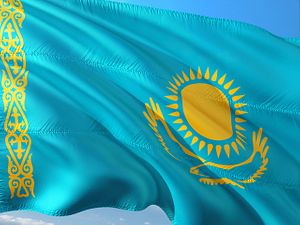On Monday, May 11, Kazakhstan’s coronavirus-inspired state of emergency ended and government officials outlined their plan for the further peeling back of restrictions. The country had already begun easing some restrictions in late April, but the end of the state of emergency signals a new phase.
In a press briefing, Deputy Prime Minister Yeraly Tugzhanov stated that the government has confidence that its restrictions were justified and have “managed to keep the spread of infection in the country at a manageable level.”
Tugzhanov stressed that the threat from the virus remains and quarantine measures are still required but, depending on each region’s status, restrictions will continue to be lifted in stages.
In late April, Kazakhstan began lifting some restrictions including allowing banks, logistics firms, and factories to re-open in most parts of the country. On May 1 flights that had been suspended as of March 30 resumed between Nur-Sultan and Almaty; on May 4 flights expanded to other Kazakh cities like Kyzylorda, Oskemen, Semey, and Petropavlovsk.
Tugzhanov explained on May 11 that certain non-grocery stores — those with areas of up to 2,000 square meters — would be permitted to open, along with salons and child care centers.
As of May 12, Kazakhstan had reported 5,279 cases of COVID-19 and 32 deaths, the most from among the five states of Central Asia. The largest concentrations of cases have occurred in Almaty, the country’s largest city, and Nur-Sultan, the capital.
Kazakh authorities are treading a careful path through uncertain territory, like governments the world over. The challenge is balancing the economic necessity of “re-opening” with the continued public health risk posed by COVID-19. There’s also a social and psychological management gambit at play: people need to feel that there’s progress, somehow.
It’s perhaps too early to say Kazakhstan has “flattened the curve,” but given the concentration of cases and the country’s vast geography, some regions will arguably be able to move forward sooner than others. This will be difficult and potentially confusing for citizens as rules change.
In the capital region, for example, quarantine rules remain in effect past May 11, as do restrictions in Almaty; Karaganda, on the other hand, will see some easing of restrictive measures according to a Tengrinews report, with the exception of the city of Temirtau in the short-term. For most regions, while restrictions on movement will be eases, general quarantine rules will remain in place. In Kazakhstan’s oil producing regions — Atyrau and West Kazakhstan — most of those diagnosed with COVID-19 have been oil workers and restrictions are expected to remain in place through May 25, though as with other regions some businesses will be allowed to reopen.
Kazakh President Kassym-Jomart Tokayev, while outlining the planned repeal of restrictions, urged Kazakh citizens to continue to stay at home. He said a second wave of COVID-19 cases is “very possible.”
































